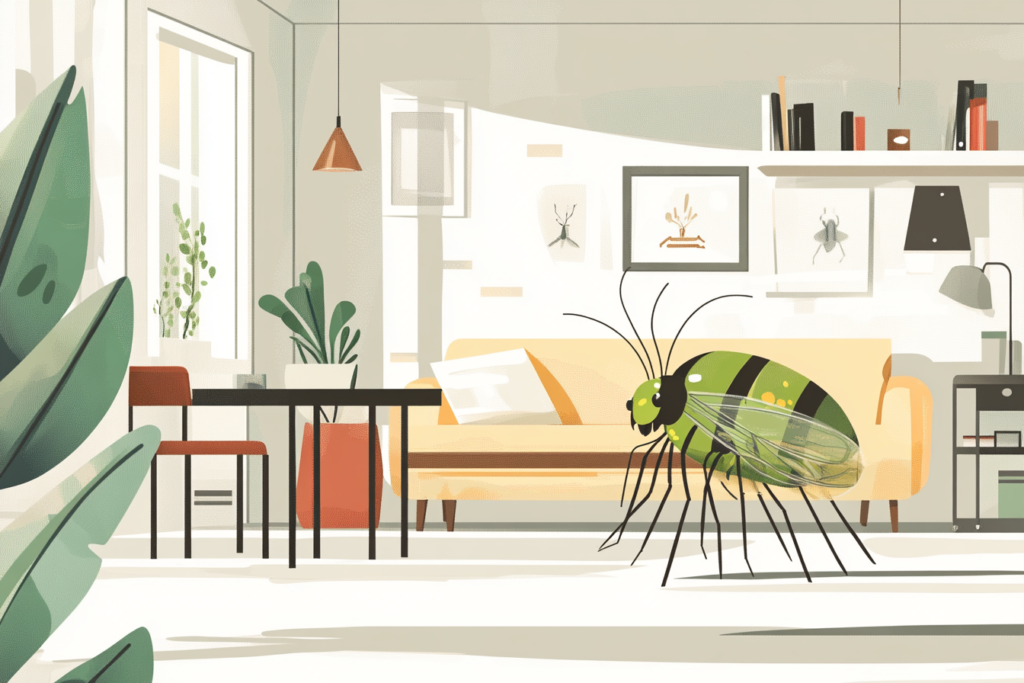As a homeowner, the last thing you want to deal with is a pest problem. However, if you have pets, children or both, you are likely dealing with an uphill battle.
The good news is, there is a way to keep the pests at bay without using the traditional chemical pesticides can pose serious risks to humans and animals, making it crucial to find methods to effectively control pests without endangering your family.
Keep reading as we share several non-toxic and safe pest control strategies that can keep bugs and rodents at bay while protecting the health of your little ones and furry friends.
1. Prevention: The First Line of Defense
One of the best ways to control pests is to prevent them from entering your home. By taking proactive steps, you can drastically reduce the likelihood of a pest problem.
Tips for Prevention:
- Seal entry points: Pests, are pesky and can find their way in through the tiniest cracks and crevices. Inspect your home for any cracks and gaps, particularly, around windows, doors, and baseboards. Use caulk or weatherstripping to seal off these potential entry points.
- Install new screens: Using screens on windows and doors can prevent flying insects from coming indoors.
- Proper food storage: Pests like ants, rodents, and cockroaches are drawn to food. Make sure opened food is stored in airtight containers and clean up spills right away.
- Remove standing water: Mosquitoes breed in standing water, so make sure to empty any containers that collect water around your home, such as plant pots or pet bowls.
- Regular cleaning: Keep your home tidy and free of food crumbs, as these can attract pests like cockroaches and ants.
2. Natural Pest Repellents
Natural pest control methods are an excellent choice for households with children and pets because they are safe, non-toxic, and often just as effective as chemical alternatives.
Essential Oils
Certain essential oils act as natural insect repellents and are safe for use around children and pets when appropriately diluted.
- Peppermint oil: This essential oil is particularly effective against ants, spiders, and mice. Add 2-3 drops of peppermint oil in spray bottle with water. Spray around windows, doors, and other areas where pest might be able to sneak in.
- Lavender oil: Lavender can repel mosquitoes, moths, and flies. Spraying diluted lavender oil around your home keeps bugs away and smells good.
- Eucalyptus oil: This oil is a natural deterrent for fleas, ticks, and mosquitoes. You can use it as a spray or add a few drops to your pet’s shampoo to repel pests.
Diatomaceous Earth
Food-grade diatomaceous earth (DE) is another natural solution that is safe for children and pets and will help rid you of your pest problem. DE comes in powder form and is made from fossilized algae, and it works by dehydrating pests like ants, fleas, and bedbugs.
- How to use: Sprinkle diatomaceous earth around baseboards, entry points, and in areas where you’ve seen pests. Be sure to use food-grade DE to ensure it’s safe for your pets and family.
Vinegar and Baking Soda
These household staples can be used as effective, non-toxic pest deterrents.
- Vinegar: A solution of equal parts vinegar and water can deter ants and fruit flies. Simply spray it in areas where you’ve noticed pest activity.
- Baking soda: Sprinkling baking soda near entry points or mixing it with sugar as bait for ants can help eliminate them naturally.
3. Pest-Repelling Plants
Planting certain herbs and flowers around your home can act as natural pest deterrents, keeping bugs at bay while enhancing your home’s landscape. These plants are safe for both children and pets, making them an excellent addition to your pest control strategy.
Examples of Pest-Repelling Plants:
- Marigolds: These vibrant flowers repel mosquitoes and aphids. Plant them around your home’s exterior to keep pests away.
- Basil: Not only does basil enhance your cooking, but it also repels flies and mosquitoes.
- Lemongrass: This plant contains citronella, a natural mosquito repellent. You can plant it around patios or in pots near entrances.
- Rosemary: Rosemary repels fleas and ticks, making it an excellent plant for households with pets.
Incorporating these plants into your garden or home’s exterior can provide long-term, natural pest control while keeping your family safe.
4. Safe Pest Control for Fleas and Ticks
Pets are particularly vulnerable to pests like fleas and ticks, which can easily be carried into the home. It’s important to use pet-safe pest control solutions to prevent these insects from harming your furry friends.
Regular Grooming
Regular grooming and bathing your pets with mild, flea-repelling shampoos can help keep pests at bay. To naturally repel fleas and ticks, you can add a few drops of essential oils, like eucalyptus or lavender, to your pet’s shampoo.
Flea Traps
DIY flea traps are another non-toxic option. Place a shallow dish of soapy water near areas where your pet sleeps or plays. Fleas are attracted to the light and heat and will jump into the water, where they get trapped by the soap.
Flea-Repelling Collars
Opt for natural flea-repelling collars infused with essential oils rather than chemical-based ones. These collars effectively keep fleas and ticks off your pets without the need for harsh chemicals.
5. Non-Toxic Pest Control Products

If you need additional help controlling pests, several non-toxic pest control products are available that are safe for use around children and pets.
Boric Acid
Boric acid is a natural pest control product that is safe for pets and kids when used properly. It is effective against cockroaches, ants, and other insects.
- How to use: Sprinkle boric acid in cracks, crevices, and any other areas where pests could be active. Be sure to keep it out of reach of pets and children.
Non-Toxic Pest Control Sprays
Many companies now offer non-toxic pest control sprays that use natural ingredients like essential oils. These sprays effectively control pests like ants, spiders, and mosquitoes without exposing your family to harmful chemicals.
- Application: Use these sprays on entry points like doors and windows, as well as in areas where you’ve seen pest activity.
6. Pest Control Methods to Avoid
While many natural and non-toxic solutions are safe, some common pest control methods should be avoided in homes with children and pets.
- Rodenticides (rat poison): These products are highly toxic and can even be fatal to pets and children if ingested. Consider using humane traps instead.
- Chemical insecticides: Pesticides containing harmful chemicals can linger in the air and on surfaces, posing a risk to your family. Opt for natural or non-toxic alternatives whenever possible.
Bye, Bye Bugs
Keeping your home pest-free doesn’t have to involve harmful chemicals that can put your children and pets at risk. By using preventative measures, natural repellents like essential oils, non-toxic pest control products, and pet-safe solutions for fleas and ticks, you can effectively manage pests while also protecting your family.
These eco-friendly pest control methods ensure peace of mind for you, your little ones, and your furry companions, all while maintaining a pest-free environment.
You might also be interested in: The Dangers of Pesticide Overuse




